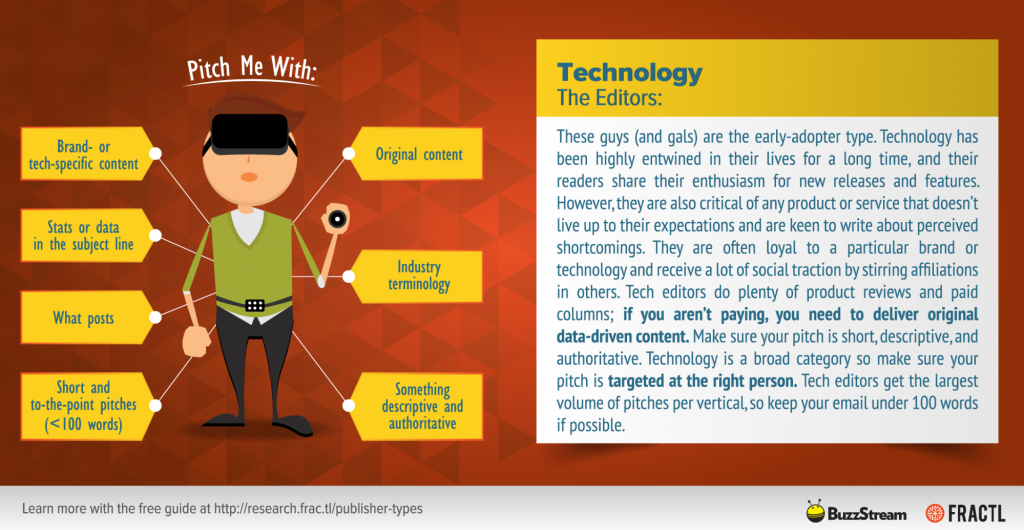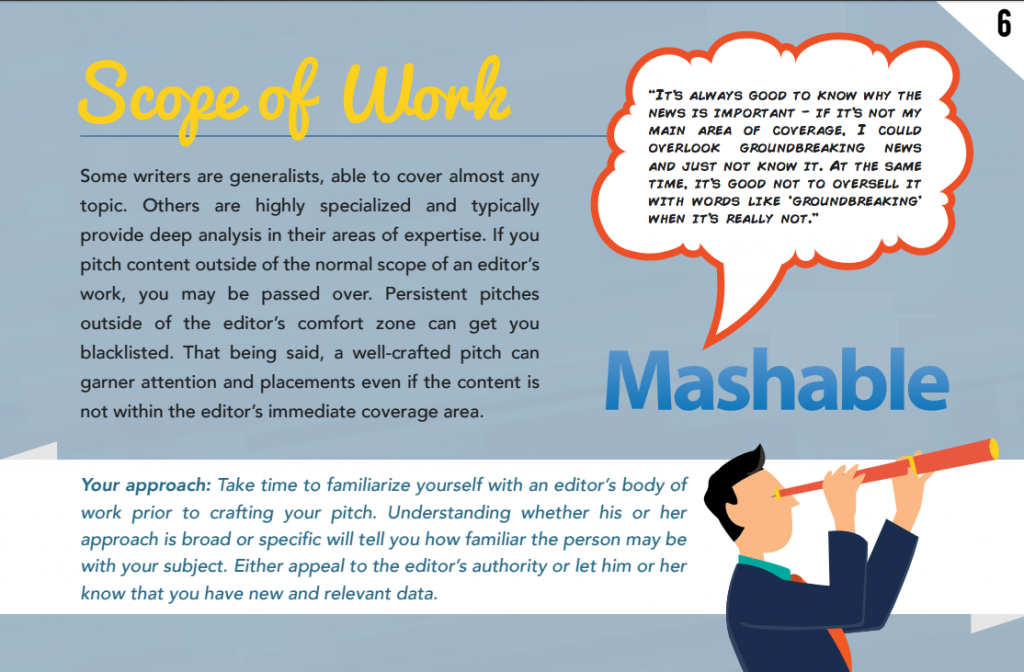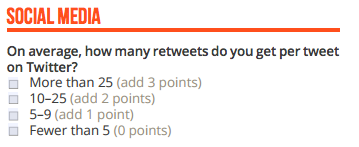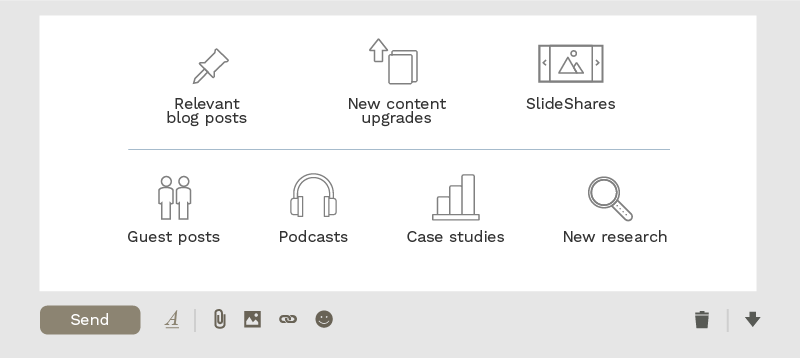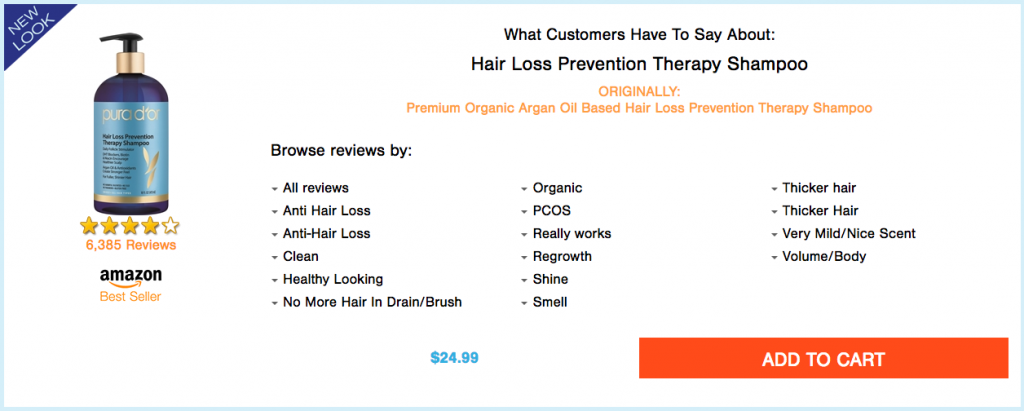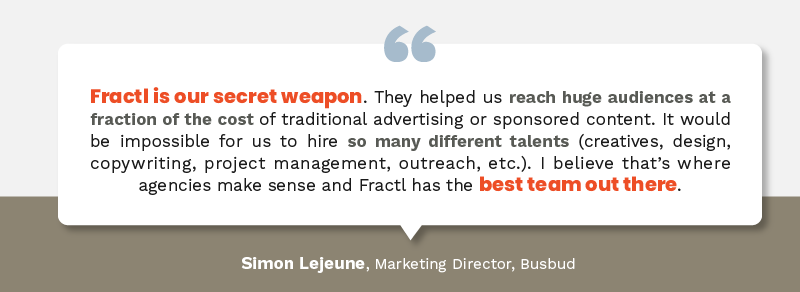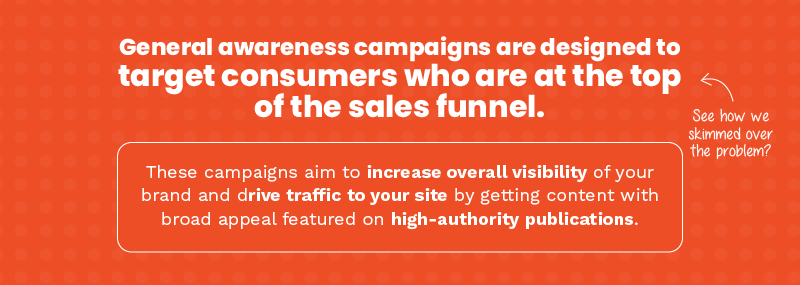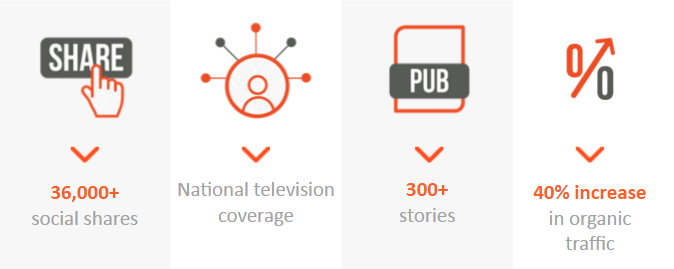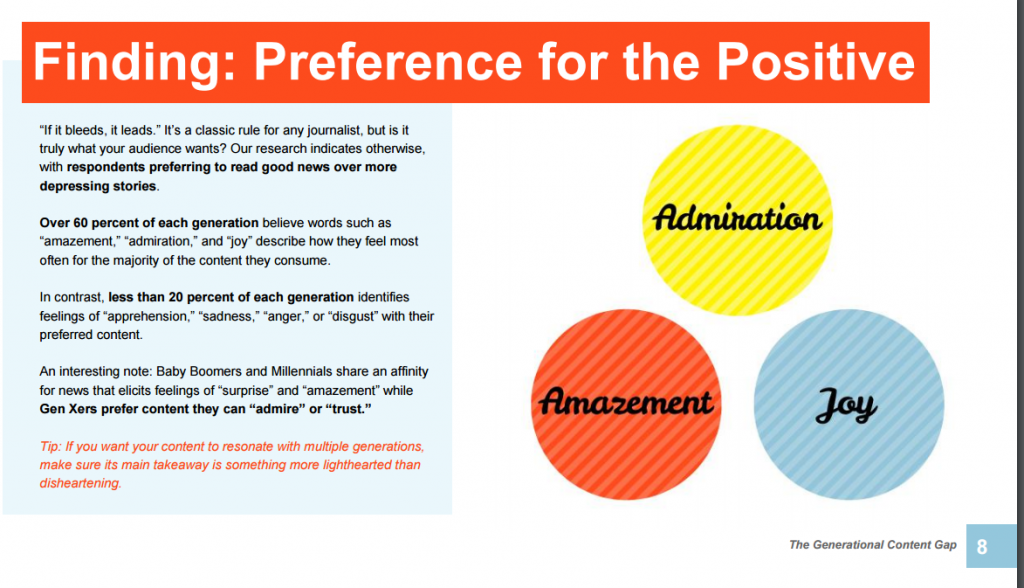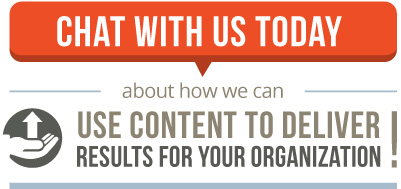Now that you’ve gotten people to your site – or at least worked out a plan for that top-of-the-funnel stage – what do you do with them? Whether you already have an idea of how to increase conversion rates or are beginning your research now, we’ve got a slew of ideas on using content to encourage your target audience to convert.
Boosting your brand awareness is step one of generating leads, but there’s little value in these marketing efforts if your site traffic stalls once they land on your page. You can create content that persuades your prospects to convert by submitting their information (e.g., to receive a newsletter) or by becoming a full-fledged customer – and we’ll show you how.
Keep reading to discover how to increase conversion rates with real examples of content that get the job done.
First, Know Who You’re Targeting
It doesn’t matter if you attracted your visitors with paid or organic tactics – you can still use content marketing to convert your leads. It is crucial, however, to build trust with your potential customers, and you can’t do this if you don’t know who they are.
We don’t mean you need to know their name, date of birth, first pet, etc. We mean you should be able to answer the following questions about who is buying your product or service:
Additionally, if you’re performing B2B marketing, you should be familiar with the nuances of their industry and job role. How would they convince their higher-ups that your company is worth the money? Think about how they would utilize your offerings daily.
Persona Example:
Part of the digital PR associate position at Fractl is to understand whom the editors are they’re reaching out to every day. We used this insider information to create a collaborative campaign with BuzzStream about publisher personas, so our audiences conducting digital outreach have the tools needed to be successful.
While publishers aren’t Fractl clients or prospects, it’s just as important that we understand their wants and needs. The research we conducted and personas we created for 11 editor types equipped our outreach team with the knowledge they need to tailor their pitches better. Here is an example of one persona:
Identifying Your Key Market
You can apply this same tactic by closely studying your target customer. Here are some ideas on conducting your research:
- Go where they go. Regularly visit the sites (publishers and blogs) that your customers frequent, and pay attention to the trending articles to learn what interests them.
- Listen to what they say. Read the comments on top stories, social media posts, and any internal communication your company has had with current customers.
- Find out who they are as a professional. Look at their LinkedIn profiles to see what they’re proud of and whom they connect with.
- Ask them what they want. Run surveys or polls to find out more about their daily struggles, goals, and what’s working for them.
Once you have a firm grasp of your key market, you can begin creating content that tells them you’re part of their community, you understand them, and they can trust you with their personal information. Let’s explore that type of conversion content now.
Conversion Type 1: Using Content to Start a Conversation
If your prospects are reading your content and like what your brand has to offer, they’ll be interested in more. The key to that is giving it to them in the format they want and with the information they want.
At this level, you’re aiming to maintain a “conversation” between your potential customer and brand. It’s these honest conversations that help lead to conversions down the line because you’re establishing trust and building the relationship early on.
[bctt tweet=”Maintain a ‘conversation’ between your potential customer and brand. #contentmarketing”]
Content that opens the door for prospects to actively engage with your brand includes content upgrades, email lists, e-newsletters, and e-book downloads.
If they like your on- or off-site content and you’ve piqued their interest enough, providing their basic information like an email address to access other resources they foresee as valuable won’t be an obstacle for them because they’ve started to trust your brand. (Read more about creating lead generation content that builds trust.)
Here are some examples of this type of conversion content.
Content Upgrades
A companion piece of content that offers additional value in addition to what the article, video, infographic, etc., offers, a content upgrade can be a range of formats, including:
The chief criterion it needs to meet is providing readers with clear takeaways or information they can use in their work or personal life. For example, a quiz about the kinds of flooring that are best in your home could include links to specific brands or varieties of hardwood, laminate, carpet, tile, or whatever they’re matched with.
Example 1:
For the publisher persona campaign we discussed earlier, we made a separate Guide to Editor Personas that readers could download separately – after submitting their basic information.
The information we included:
We made it valuable by including specific approaches to use when researching an editor or writer you want to pitch. Areas include education, work history, target audience, the scope of work or niche, and graphic needs (e.g., infographics for the health vertical and high-res photos for food sites).
The format we used:
Knowing our target audience didn’t need charts and would want as much guidance as possible, our guide was packed with information. We spruced it up with fun graphics that kept it interesting but weren’t too distracting. See a page from it below.
Example 2:
Another content upgrade we made was a list of 100 Awesome Content Discovery and Curation Tools as a companion piece to How to Curate Your Social Content With Reddit, an off-site guest post on Social Media Examiner.
The information we included:
We kept the downloadable toolkit simple, with the name, link, a brief (and we mean brief) synopsis of how readers can use each tool, and topic (where applicable). When making a comprehensive list, you don’t want to overwhelm readers with huge blocks of text for each item on the list.
The format we used:
We divided the list by category (content discovery, social discovery, curation, organization, and curated newsletters) and went for a very clean, streamlined look. Those who downloaded this expected a list – not an article, infographic, or detailed guide – so we gave them a list.
Example 3:
For a bonus to our How to Increase Brand Awareness blog post, we created the Brand Real Estate assessment tool. This content upgrade was targeted to our prospects who learned useful tips in the post and wanted even more.
The information we included:
Geared toward those who were unaware of how much exposure their brand currently had, the tool allowed readers to use their answers from 11 questions about content, search, and social media to score their brand real estate (get a peek at one of the questions below). Then, readers referred to a scale that correlated to actionable tips they could use to boost their brand awareness.
The format we used:
The actual tool was a downloadable PDF that was split, with the first page being the assessment questions and the next pages detailing what the score ranges meant and high-value guidance on tactics that our agency uses to increase brand awareness. The two sections allowed for people to use one or both components.
Pro Tip: Instead of having a separate landing page with the content upgrade, we embedded the link to the tool within the blog post. We used the OptinMonster plugin to create a popup for the Brand Real Estate tool specifically. (Thrive Leads and Bloom are other good plugin options.) See below as an example – not because we want you to download it – wink wink.
Moving on to the next type of content that’s helpful when seeking how to increase conversion rates …
E-Book Downloads
Well-written e-books on a specific topic can do wonders for building trust between your prospects and brand. If a lead is willing to provide their personal information to download your e-book, it’s very likely they’ll read it eagerly. But if you throw it together without regard to quality, you’ll do more harm than good.
Think about it: If you read a book and hate it, would you choose another book by that author?
An e-book that’s geared toward informing your target audience should include actionable tips that your readers can put to use in their work or life. They’re downloading your e-book because they’re expecting to learn something from the educational content – if you meet or exceed their expectations, your prospect will trust and respect you, which is needed for the conversion.
Our “Tell-All Guide to Digital PR” works as a lead-generation tool because it provides our target audiences with information that will help them improve their own business or marketing efforts while positioning us as an authority. We clearly lay out what the e-book offers on the landing page where it can be accessed, which establishes trust with readers since we deliver on the promises made.
We’ll use this e-book as an example in our six tips for creating a high-quality e-book.
1. Choose a topic that solves their problem.
Offering a solution to your prospects is an essential criterion for converting leads. Why would you want to solve a potential customer’s problem without them making a purchase from you? Because at this phase of the sales cycle, you’re instilling confidence that you’re a trustworthy brand and understand your market’s needs. You’re showing that you offer value to the conversation.
EXAMPLE:
In our digital PR guide, we looked at one component of our agency (digital PR) and used our industry knowledge, research, and survey of 1,300 writers and editors to help our readers solve their problem of not getting press coverage for their content. We used our introduction to state we understand the root of their issue clearly:
2. Include a table of contents.
Sure, you may have some readers who will read your e-book in its entirety, but you’ll also have some who want to hone in on specific parts. A table of contents lets them do this with ease, but it also serves a bigger purpose: It provides a roadmap of what to expect. Just like when you’re on a road trip, it’s comforting to know when you’ll be crossing state lines and if you can expect to see mountains or an ocean.
EXAMPLE:
Not much for us to say other than showing you our e-book’s TOC:
3. Make the text skimmable.
You’re writing an e-book, not vying for a Pulitzer. Readers won’t be hanging on to your every word, so you need to format your content for skimmers. Also, large blocks of text can be intimidating – and quite frankly, not worth the work of reading. You want to keep things interesting with images, graphics, charts, pull-quotes, etc. Doing this also appeals to visual learners.
EXAMPLE:
We broke up our sections and text with subheadings and call-outs and sprinkled in icons, screenshots, graphics, and highlighted stats and resources. We also added fun side notes (see below).
4. Link to content upgrades in it.
Some of your readers will want even more information than what your e-book contains, so including access to additional content upgrades provides that extra value. Doing this also helps keep your e-book to a not-too-long length for those whose eyes glaze over after page 40.
Pro Tip: Don’t link to other gated content in your e-book. Your readers already gave you their contact information once and will be annoyed to re-submit it.
EXAMPLE:
We used content upgrades as “Bonus Sections” to take advantage of other formats that didn’t mesh well with an e-book, like our printable Before-You-Pitch Checklist. Of the other four content upgrades, our “Writer/Editor Red Flags” stood out to many readers because of the what-to-avoid angle. Here’s one of the tips:
5. Don’t litter it with CTAs.
We’ve read e-books that have several FULL-PAGE ads or calls to action – don’t be that person. Your readers were familiar with your brand enough to fork over their info to read your e-book, so there’s no reason to blast your products or services. Instead, let your expertise speak for itself.
One or two brief, tasteful CTAs are generally acceptable.
EXAMPLE:
The goal with our e-book was to provide all the tools necessary to build a solid outreach strategy. If prospects don’t have the resources to execute it, Fractl is here to help. Our simple CTA linking to our contact page at the end was all we needed:
6. Create related content to promote it.
You spent time and money creating a high-quality e-book. Why let it sit on your site collecting virtual dust? In addition to having a landing page for it, create on- and off-site content to get the word out. Write a blog post about it, craft a few guest posts for other sites, blast it on social media, and link to it in your e-newsletter.
EXAMPLE:
We link to our e-book in various blog posts (like this one), have a separate post with an excerpt from it, and feature it on our marketing research page. We also created a research piece with the results of our survey and plug the e-book there. Several guest posts link to that research to further our reach.
Now that we’ve covered the value of e-books for increasing conversion rates, let’s switch gears and explore our final type of content that builds trust with audiences.
Email Lists and E-Newsletters
When a potential customer or client opts in for your email list or e-newsletter, they’re showing explicit interest in your brand. Whether you offer pet sitting services or sell kids’ clothing, you can create compelling content that appeals to your target market and tease to it in sporadic emails or a regular e-newsletter (e.g., weekly, monthly, or quarterly).
The type of content we mean is actual content, not a sale announcement or link to a new product. Not to say that you can’t broadcast information like that to your email subscribers – we just want to be clear that the high-value content we’re discussing is different and achieves different conversion goals.
Pro Tip: It’s important you’re clear to prospects when soliciting their email address and don’t spam them with every type of email communication you offer. For example, if they give you their information for access to a content upgrade, don’t send them every other piece of gated content you offer.
So what type of high-value content can you include in your emails or e-newsletters? Here are some ideas:
We’ve found it’s also beneficial to include startling stats from your research in your e-newsletter – they’re great hooks. Here’s one we featured that leads into an interview our associate director of marketing did for the Experts on the Wire podcast.
Every time you make your brand visible in a lead’s inbox, use it as an opportunity to demonstrate your value and show how you are an authority – don’t say you’re the best because of X, Y, and Z. For example, in the tease to the podcast in our e-newsletter image above, we reveal Kerry’s industry knowledge, which shows we get results.
When a prospect signs up for your email list or e-newsletter, he or she is actively participating in a dialogue with you. If you fail at delivering what you say your email signup offers, they’re going to stop listening to you. Sending too many emails, sharing their contact information with third parties, and simply bragging about your brand or its offerings in an e-newsletter are all causes that will halt the conversation.
Keep the Conversation Going
Keep the dialogue going both ways by allowing for feedback. This can be done via comments on your blog and social media. You can encourage your readers to add their two cents by posing a question or asking for their opinion at the end of an article.
Your e-newsletter or other email blasts are a great vehicle for eliciting suggestions for the kind of content your prospects (and current customers!) want.
Be sure to actually listen to what your audience is saying and asking for, and then create content around that. For instance, say your brand sells gel inserts for shoes. In response to a blog post about exercises that are good for your feet, a reader comments about how certain pressure points can alleviate foot pain. A great piece of content would be a guide on performing massage and acupressure on yourself or partner’s feet.
An indirect way of listening to your audience that’s crucial is seeing what content on your site does best and then doing more of that.
Pro Tip: Monitor metrics like email list open rates and click-through rates to get an indication of what among your past email content has interested your readers. Then produce more of that in the future.
By engaging in a conversation between you and your key market, you’re able to understand their wants and needs more, and they’re more likely to trust your brand. Once a relationship and trust are established, you can work on converting your prospect to a customer – our next topic.
Conversion Type 2: Becoming a Customer/Client
In this case of talking about increasing conversion rates, we’re referring to trying to acquire more customers or clients. To win over prospects who are already interested in your brand, you should use content to explain how your company is superior to your competitors.
[bctt tweet=”Use content to explain how your company is superior to your competitors. #marketing”]
To do this, keep in mind your brand’s value proposition and communicate it through your content in a way that’s easy to understand. Here are some goals you want to accomplish with this type of conversion content:
Let’s dive into these types and see how they help with sealing the deal with prospects.
Product Reviews and Testimonials
There are a few words you can use that are better than what comes straight from the customer. The reason is twofold: The language (wording, tone, etc.) customers or clients use is the same as what prospects use, and product reviews or testimonials are extremely credible.
When people are spoken to in the same way they speak, they’re more likely to fully understand what’s being said, and the message is more likely to resonate.
Gathering and assessing reviews or testimonials is also a great way to learn the greatest benefits your product or service offers. In addition to sharing these endorsements publicly, you can use the content of them to guide your marketing efforts.
We’ll look at some examples to show you what we mean by this.
Product Review Example:
Pura D’or offers a hair-loss prevention shampoo that’s highly rated on Amazon. The brand capitalized on its abundance of reviews by featuring them in their own section on the site and breaking them down by category so potential customers can read what pertains to them specifically.
Those who are interested in this product know they have a problem (hair loss) and that Pura D’or offers a solution (keeping hair from falling out). The purpose of showcasing the reviews isn’t to state just that, though – it’s to show the brand is superior to others because it enhances your hair in other ways as well.
Below you can see various topics, including Clean, Shine, Thicker Hair, and Volume/Body.
Most would agree that our shampoo needs to work for our hair in more ways than one, and by highlighting all of the benefits, this brand has demonstrated that value.
This tactic works in another way too: It allows potential customers to read the reviews that appeal to them the most. For example, the “smell” may be an important criterion to some, while “no more hair in drain/brush” targets a pain point for others.
Evaluating these reviews has enormous value for the brand; Pura D’or is able to use the way customers discuss the product in its marketing content to resonate with key audiences.
Here is a review on the Pura D’or site:
The customer makes it clear that the amount of shampoo the pump provides as well as the scent are important to her. Pura D’or can use this information in its content marketing, such as:
- a general awareness campaign (e.g., have blindfolded participants guess the scent of different things, with one being the shampoo) or
- a targeted checklist (e.g., does your shampoo do these 10 things all at once?).
Now that we’ve covered product reviews, let’s look at client testimonials for service-based businesses.
Testimonial Example:
The work we did for Busbud reveals how we can boost brand awareness for our clients. In addition to creating a case study on the engagement (more on that later), we feature a testimonial on our Services page:
Our client’s endorsement of our services is better than any ad we could write ourselves because it’s authentic. Any brand can tout themselves as “the best,” but to have it come from a paying client is much more credible because it shows our work has benefitted a brand in a big way.
This testimonial also hits on our agency’s value proposition:
- “fraction of the cost of traditional advertising or sponsored content”
- “impossible to hire so many different talents”
- “where agencies make sense”
A problem our clients come to us with is a lack of knowledge and/or resources to create high-quality content and perform digital outreach to obtain press coverage. The Busbud testimonial affirms that Fractl can be your “secret weapon” (i.e., solution) in content marketing.
Pro Tip: Some marketers suggest outlining what you would like a client to write about in their testimonial – or even writing it for them entirely. While this may save your client time and increase the timeliness in their response to you, we advise using caution and not doing this. Why? It won’t be genuine, and prospects will likely pick up on it. However, it is OK to provide examples of what other clients have done to offer some guidance.
Both client testimonials and product reviews can be used in our next type of conversion content: case studies.
Case Studies
We use case studies as part of our lead generation strategy at Fractl and have seen a nice boost in conversions to their credit. We’ve rounded up four actionable tips that you can use today, and we’ll use Busbud’s Most Instagrammed Locations case study as an example as we review them.
Tip 1: State what the problem is, but then move on so you don’t bore your target audience.
Potential customers who are consuming this kind of content are well aware of the problem they have, and they’re not reading your case study to rehash all of their woes. The basis of a case study, however, is demonstrating how a solution overcomes a problem, so acknowledging the issue is necessary.
Check out how we did this with the following content from our Most Instagrammed case study:
Tip 2: Make your results super obvious.
You don’t want your prospect hunting down results that are buried in a case study. Rather, highlight the outcome – this is what encourages an interested person or business in becoming a customer or client of yours. If prospects don’t know what they can expect from your services, why would they go with your company?
We showed the main results from our Busbud campaign right off the bat:
Then we provided more details on these results before reiterating them again:
Tip 3: Include third-party evidence.
Don’t assume readers will believe everything you say. Instead, present evidence that supports your claims. For instance, if your brand has the support of big-name bloggers in your niche, you could include their logos and link to their coverage of your product or service with an “As seen on …” section.
Given that the press mentions of our Busbud campaign are a big part of our results, we linked to many of the publishers that featured the campaign:
Tip 4: Promote your case study without misleading your audience.
We link to our various case studies in our other content (blog posts, guest posts, content upgrades, etc.), which increases their visibility.
If prospects are investing their time in reading your case study, you need to be sure you deliver on what you say your case study will demonstrate to them – otherwise you can kiss your chance of conversion goodbye.
On our Link Building services page, we feature our Busbud case study as an example of the results we achieve with successful campaigns:
Tip 5: Create an easily digestible, alternative format.
Say you’re on a sales call with a prospect who’s this close to signing, but they want additional information on how your offerings have impacted the bottom line of other clients. Sure, you could direct them to a case study on your website, but wouldn’t it be more impressive to send them a slideshow with a few case studies that are specific to their goals?
That’s exactly what we did with our pack of four viral content case studies, which offers prospects a look at how we create and distribute campaigns to the masses. We also have one-page breakdowns of our case studies that we send directly to leads.
If your business is the right platform for it, case studies can also have their own section on your site.
Pro Tip: Don’t discuss particulars like timelines, requesting signoffs, or any other technicalities that are too specific for the scope of a case study. Remember, you can tell potential clients the whole process later.
Our last type of conversion content is white papers, so let’s jump into that now.
White Papers
Similar to how case studies show a problem and solution, white papers have the same intention. They can take a research project, experiment, or study of yours to the next level by going into more detail about a specific component.
They’re an ideal answer to how to increase conversion rates because you can offer them as gated content. After capturing their contact information and converting them that way first, you can then focus on converting them to full-fledged customers or clients by providing value to them via your white paper.
The most important aspect of your white paper is it’s loaded with tangible benefits that readers can put to actual use. This means it needs to be well-planned and well-executed – not an afterthought as you wrap up a main project it coincides with.
We’ll show you a few of ours.
White Paper Example 1:
We surveyed 500 publishers to find out how the subject lines of pitch emails affect the likelihood of them opening the emails. Our collaborative study with BuzzStream included an article and infographic, but when mapping out those components, we also strategized the content for our white paper. This tactic ensured the extra findings from the survey were saved for our piece of conversion content.
We also used our white paper (titled 21 Tips for Pitching Publishers and Writing Exceptional Subject Lines) as a place to expand on our original report. When readers are interested enough in your content that they provide their contact information for access, they’re likely going to be laser-focused on that gated content. So use your platform wisely – include applicable tips or advice, and make sure you position yourself as an authority on the subject.
Take a look at the many pieces of advice on just one page of our white paper:
You don’t have to keep white papers behind a wall, and our next example offers this other perspective.
White Paper Example 2:
For our Content Engagement by Generation study, we created several elements including a landing page. We kept this content brief – providing three key takeaways – and highlighted a link to our more extensive white paper. Our goal with this strategy was to hook prospects without deterring them with a signup page.
In order to gain visibility for this campaign, we performed digital outreach to publishers in the marketing niche. We landed prime guest posts on Moz and Marketing Land (among others) and were featured on sites such as Adweek and Social Media Today. By providing public access to the white paper, we likely upped our chances of this coverage by various publishers.
We suggest using this tactic when you want to attract audiences, strengthen your brand recognition, and showcase your expertise. In this strategy, the white paper is used as a conversion tool to demonstrate your in-depth knowledge of the industry to prospects who actively engage with your content.
More White Paper Examples:
Here are some additional white papers you can look at for ideas in creating your own:
- What Kind of Marketing Do Millennials Really Want?
- Secure High-Authority Press: 500 Publishers Tell You What They Want
- Which Publishers Are Winning at Social Engagement?
Placement of Your Conversion Content
The quality of the content you create to encourage conversions is important, but so is the location of it.
You want to make sure it’s on the pages of your site where people who are interested in converting will end up.
For example, when people use search engines to find a type of product or service, they’ll be linked to whichever pages are high ranking for those keywords. So you need to plan your conversion content for pages that prospects will find through organic search. (Read more about search engine rankings.)
The page they land on doesn’t have to be, say, a white paper, but it should at least link them to conversion-driven content. Think about which of your existing pages are optimized for this and which need work.
Many of our potential clients land on our Services pages – there you’ll find testimonials, relevant case studies, and value-packed resources that demonstrate our success and authority. We included those because we want to direct prospects to our content that’s aimed at conversion.
Don’t be afraid to tinker with your site’s flow and content. Test different forms and pieces of content to find what’s working and what can be improved.
Now You Know How to Increase Conversion Rates
The biggest tip to keep in mind when you’re aiming to increase conversions on your site is to feature content that shows how your product or service will solve a prospect’s problem. If you use your content to overcome any objections a potential customer will have, closing that lead will be easy.


